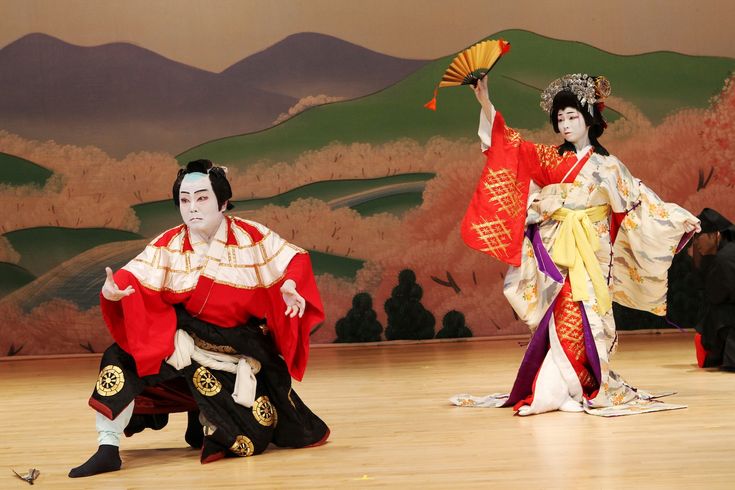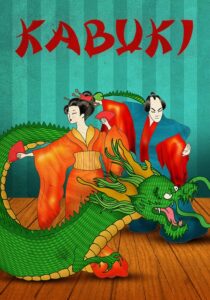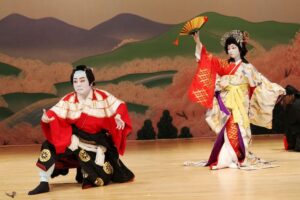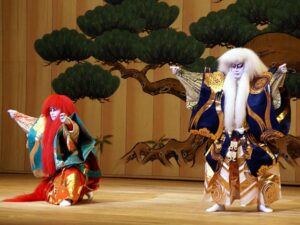
Kavindya Senevirathna



Kabuki is a dramatic art form that is considered an incomparable gem of Japanese culture. It can be considered a single strong art form that combines dance, song, drama, music, stagecraft, and beauty, and it is deeply intertwined with Japanese folk life and spiritual tradition. Kabuki is a name that comes from the original language, which means “singing, dancing, and dramatic action.” It combines the deep sensitivity, beauty, and meaningful cultural feelings of the Japanese people.
Kabuki originated in the early 17th century. It was a time known as the Edo period when Japanese society was experiencing the emergence of a wealthy merchant class and a new ecological cultural system. It was created by a pure dancer named “Okuni,” who was a nun. Okuni popularized a new theatrical style that combined dance, song, and charm in Kyoto. The appearance, costumes, and stylish characters of Okuni’s dances attracted much attention, and a new genre of theater called “kabuki” was born.
Kabuki was initially seen as a whimsical form of theater, often with feminine dances. However, in 1629, the Imperial Court legally prohibited women from performing in the theater. The main reason for this was the social criticism of the sensual and fashionable elements of the theater at the time. This led to a new development, “Wakashu Kabuki.” This was a form of theater performed by young male actors, but it was also banned because it was too erotic.
Accordingly, Kabuki underwent another evolution with the emergence of a form of drama that was exclusively performed by male actors known as “Yaro Kabuki.” This was the era when the full professional Kabuki art as we know it today truly emerged. Among these male actors, those who played female roles were known as “Onnagata.” Their artistic expression was very sensitive and creative. Their clothes, mannerisms, voices, and looks all portrayed the mood and beauty of a woman.
The specialty of Kabuki is that it is a living art form that is constantly evolving. It has three main elements: dance, music, and drama. Together, these three create a touching and stylish visual experience. Dance is considered the lifeblood of Kabuki. It conveys symbolic qualities, complex physical movements, and dramatic meanings in various ways. The dance movements are specially designed and have stylish patterns related to beautiful moments.
The stage of Kabuki is very special. A long passage called “Hanamichi” leads away from the stage and into the audience. This passage is used to depict the entrance or situation of a particular character. This is an innovative feature that increases the dramatic impact of the Kabuki stage. Sometimes the stage uses a revolving system that can be rotated in an evolutionary manner so that the transition between scenes is direct. All of this enhances the style and visual beauty of Kabuki.
Characterization is the heart of Kabuki. Its characters are often stylish, surprising, and expressive. The stories are often depicted under the mood of Japanese history, local sorrows, love, faith, opposition, and the retreat of truth. But all of this is not ordinary reality, it is composed of dramatic style and distortion. The characters’ behaviors are used in a big, dramatic, and exaggerated way, a style that captivates the audience.
Costume and beauty are an integral part of Kabuki. The costumes worn by the actors are large, colorful, and fashionable. They often reflect the character’s personality and status. For example, red represents justice and heroism, while gray and black represent generosity, fear, or wickedness. The facial painting style known as “kumadori,” in particular, is often considered a signature of Kabuki. These graceful facial features convey the character’s inner state and deep meaning.
Kabuki music is another highlight. Various musical instruments are used throughout the play. The music, played by instruments such as the shamisen (a string instrument), taiko (a drum), and flute, adds to the dramatic warmth and emotion. This music is accompanied by the actors’ movements and expressions, and sometimes musicians appear on stage.
Another important element of Kabuki is the “Miye” movement. It is a dramatic pose performed by a performer at a special moment in the play. Here, the character is portrayed in a strong and emotional manner, with the hand and face movements suddenly stopping. At this moment, the audience shouts “Matte!” as if in a fight. This is considered a major cultural symbol of Kabuki.
The subjects represented by Kabuki are diverse. Themes such as historical war stories, love and leisure stories, social contradictions, family problems, self-descriptions, and questions of faith are well represented here. It shows the suffering, fear, desire, and love of the people in a dramatic style full of meaning. Kabuki is not just entertainment but also a spiritual inquiry into the meaning of life.
Throughout history, Kabuki has faced many influences. These include wartime, government bans, and social changes. But it has never disappeared and has always been innovative. A generation of active performers has kept it alive, and Kabuki remains a living part of Japanese culture to this day.
Kabuki is still very popular in Japanese theater today. There are large Kabuki theaters in cities such as Tokyo, Osaka, and Kyoto, and special events are organized for foreign audiences. It has been modernized by using new broadcast methods, electric lighting, and new theater systems, but it has never lost its original spirit.
Kabuki shows the meaning of Japanese artistic beauty not only to the Japanese people but also to the world. It has been designated as an “Intangible Cultural Heritage of Humanity” by UNESCO. This makes Kabuki drama a valuable cultural asset in the world.
Kabuki drama is not only a musical style but also a way of life, an expression of the Japanese spirit, and a technical evolution of human emotions. It exists as a complex system that integrates art, religion, society, and spirit. In Kabuki drama, each character is imbued with love, pain, passion, and hope. It is a journey of searching for the meaning of human life.
But even within this very meaning, Kabuki has two meanings — one is cultural value, the other is spiritual life. It is an eternal beauty that combines antiquity and modernity. For the Japanese people, Kabuki is a living classic that combines their spirit, tradition, and beauty.
Even today, Kabuki artists pass it down from generation to generation after training. Kabuki lives on in a very special way because of their spiritual dedication and their desire to seek theatrical perfection. For a Kabuki artist, earning that theatrical title is a lifelong commitment. He or his descendants devote fifty years to preserving the Japanese cultural spirit.
Kabuki is a bridge between the past and the present. It is a psychological art form that reflects the Japanese psyche, criticizes the human spirit, and seeks the meaning of life. It is seen as an eternal meaning and a spiritual expression. Kabuki theater is a celebration of humanity, style, and art.
An fascinating dialogue is worth comment. I believe that you must write extra on this matter, it may not be a taboo subject however usually persons are not enough to speak on such topics. To the next. Cheers